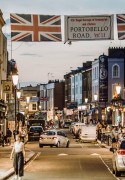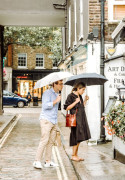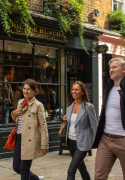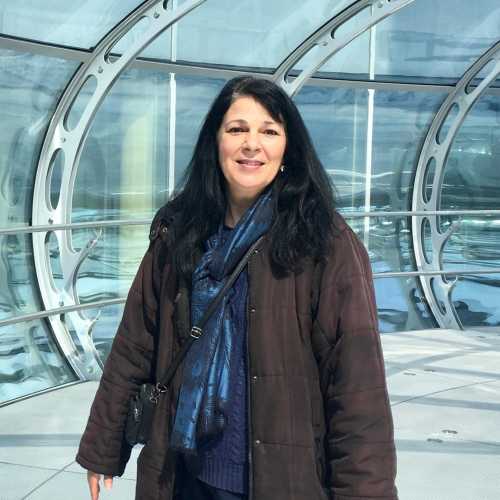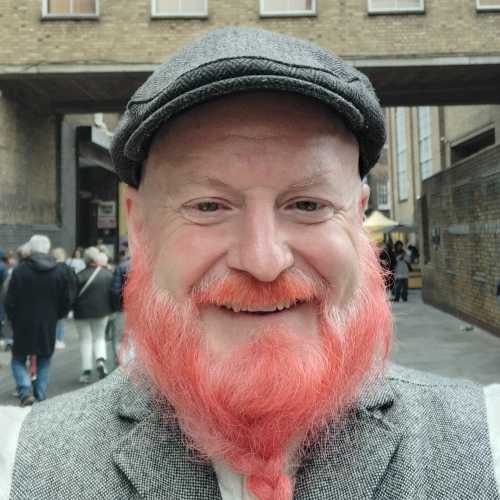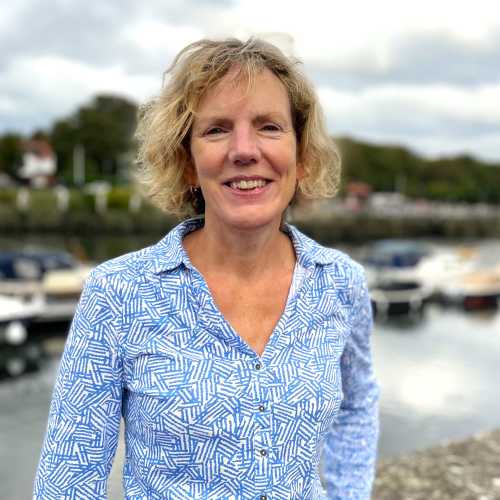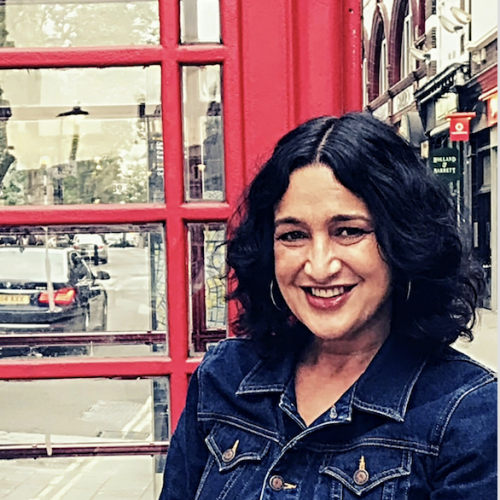We only had a day trip to England, and only four hours in which the guide did a great job making sure we hit all the main tourist attractions! She was very friendly and attentive.Alaina, London, 2025
Explore London Like a Local on a Private Tour
Real neighborhoods, local hangouts, your pace
Table Of Contents
- What Makes a London Neighborhood Worth Your Time?
- North London: Where You Should Stay, When You Want Space, and the Heath
- East London: Where Creative Grit Still Shows
- South London: Which Neighborhoods Move to a Food Rhythm?
- West London: Where Old and New Money Meet
- Central London: What Should You Skip and Why
- The Neighborhoods I Tell Friends to Skip (And Where to Go Instead)
- What to Eat in London: Where Does the Real Food Live?
- Things to Do at Night in London: Where Are the Real Bars?
- Practical London Tips: Transport, Timing, and Rhythm
- Personal Recommendations (No-Nonsense, Lived-In)
- Frequently Asked Questions
- Final Thoughts: London Neighborhoods Reveal Themselves Slowly

Indian market stall in Wembley
You won't get to see the real London on the first pass. You can tick off Big Ben, the London Bridge, the London Eye, cross Westminster Bridge with the crowds, and still miss the pulse of the place.
The best neighborhoods in London live in the margins: the Turkish grill smoke drifting down Green Lanes, the Saturday thrum of Broadway Market, the quiet mews tucked behind Kensington's grand facades.
I grew up in Wembley, between spice shops and street markets, and I've spent years mapping this city by flavor, rhythm, and the small rituals that make a place feel like yours.
This is not a London neighborhood guide built on postcards. It is drawn from actual London experiences. It's all about bus routes and corner shops, from knowing which queues are long for a reason and which streets empty out after dark.
I've found that London neighborhoods sprawl across zones and centuries: medieval alleys in the City of London, Victorian terraces in Hackney, brutalist estates in the Barbican. And I want to share my favorites with you.
What Makes a London Neighborhood Worth Your Time?
The best neighborhood isn't the one with the most attractions. It's the one that fits your rhythm.
Do you want tree-lined streets and green spaces within walking distance, or do you thrive in the creative scene and street life of East London?
Are you here for Michelin-starred restaurants and art galleries, or do you want street food, vintage shops, and the hum of a Saturday market?
London goes wide. Central London holds the tourist anchors: Buckingham Palace, Trafalgar Square, the West End.
But it's the neighborhoods radiating outward that give you texture. South Kensington offers museum-hopping and Victorian architecture. Brixton pulses with Caribbean food and incredible murals. Hampstead climbs toward the Heath, where the city falls away and everyone levels out under the same sky.
Experiences Created by Locals, Just for You
See London through the eyes of the people who call it home.

Hampstead Heath skyline view with London sprawling below
North London: Where You Should Stay, When You Want Space, and the Heath
North London climbs upward, literally and figuratively, offering more breathing room and green spaces than the packed zones south of the river.
Here's where the city opens up into parks, ponds, and neighborhoods that feel less performed.
Hampstead: Why Do Locals Climb for the Heath?
Hampstead sits high. You feel it in your calves as you climb from the Tube, past the old pubs and narrow streets lined with brick and wisteria.
This is where old money meets old-school artists, where the houses cost millions but the Heath is free to everyone.
The real gift here is Hampstead Heath: 800 acres of green spaces, ponds, and skyline views that stretch all the way to Canary Wharf.
On weekends, it fills with runners, dog walkers, wild swimmers braving the ponds, and families sprawled on the grass. It's a lovely place to disappear for a few hours, especially if you've been trapped in the busy city center. Hampstead Heath has unmade paths, so choose the paved Parliament Hill approach for easier grades if you need step-free access.
Walk past Flask Walk toward Church Row and you'll find 28 Church Row, a wine bar and restaurant tucked into a Georgian terrace. The pork belly and croquetas are the most popular dishes, and you should definitely try them.
It's quiet, neighborhood-polished, the kind of spot where locals settle in for long Saturday lunches. Nearby, the streets around Holly Bush Hill curve and tighten, revealing sudden gardens and blue plaques marking where writers and painters once lived.
Hampstead isn't scrappy or rough-edged. It's moneyed and self-possessed, but the Heath is the great equalizer. Everyone looks the same after a muddy walk.
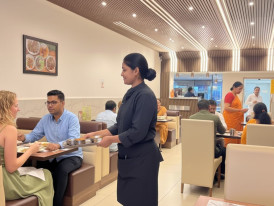
Indian restaurant in Wembley serving happy customers
Wembley: Where I Go for Real Indian Food
This is home ground for me, so I'll keep it simple: Wembley is where you go when you're done with Dishoom and you want the real thing.
The high street is lined with sari shops, sweet shops selling jalebi and barfi, and restaurants that know their way around a tandoor.
The energy here is community-first. You'll hear Gujarati, Hindi, Tamil, and English mixing on the same corner.
The food is better and cheaper than anything in Central London, and no one's trying to impress anyone. They're just feeding their neighbors properly.
If you're staying elsewhere but want a proper meal, take the Tube to Wembley Central or Wembley Park.
Eat well, walk off the carbs around the stadium area if there's no match on, and head back into the city with a full stomach and lower expectations for everywhere else.
Haringey and Green Lanes: Why Is This Turkish Corridor Essential?
Green Lanes runs long through North London, and the stretch through Haringey is one of the best food corridors most visitors never find. Turkish restaurants line the street: grills, pide, meze, baklava, and tea served in tulip glasses until late.
This is a working neighborhood, not a destination, but that's exactly why it works. The food is consistent, affordable, and unapologetically itself. Go hungry, order more than you think you need, and don't skip the grilled vegetables.
The vibe here is straightforward: locals, families, a few students, and the occasional food-obsessed Londoner who knows better than to stay in Soho for dinner.
If you're staying north and you want to eat like you live here, this is where you come.
Hungry to Try London Yourself?
Taste and explore the flavors locals actually love.

Food stall at Ridley Road Market
East London: Where Creative Grit Still Shows
East London has been gentrifying for decades, but pockets of realness remain if you know where to look. The creative scene, immigrant communities, and warehouse-to-loft transformations all sit side by side here.
Hackney: Where East London Eats
Hackney covers a lot of ground, from the polished cafes near London Fields to the grittier stretches east of Mare Street. This place proves there are many amazing things to do in London.
What ties it together is a certain realness. This is where the creative scene lives alongside long-standing Caribbean, Turkish, and Vietnamese communities, and the food reflects all of it.
Broadway Market on Saturdays is the neighborhood at its most visible: street food, vintage clothes, natural wine, and the kind of crowd that will queue 20 minutes for sourdough. Walk east from there and you'll hit London Fields, a wide green space where people sunbathe, play football, and drink tinnies when the weather allows.
For food, I go to the Caribbean spots along Kingsland Road and Ridley Road Market. Proper jerk chicken, rice and peas, plantain. The kind of meal that leaves you full and happy. Hackney doesn't do small portions.
The streets around Hackney Central and Bethnal Green are messier, less curated than nearby Shoreditch, but that's the point. You get more space, better prices, and neighborhoods that aren't performing for Instagram.
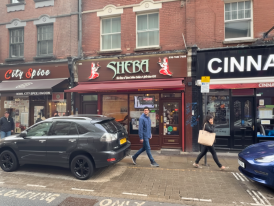
Brick Lane curry houses
Shoreditch and Brick Lane: Tourist Core or Local Side Streets?
Shoreditch has been "the next big thing" for so long it's now just the thing. Street art covers the walls, independent shops and vintage stores line the alleys, and Brick Lane draws weekend crowds for curry, bagels, and market stalls.
Yes, it's touristy. Yes, Brick Lane's curry houses are hit-or-miss. But walk a few minutes and you find the London that still works: Colombian bakeries on side streets, Vietnamese banh mi spots, the older fabric shops that survived the gentrification wave.
If you're staying in East London, this area offers easy access to Central London, good transport links, and enough late-night bars to keep you entertained. Just don't make it your only stop. The best of the east sprawls wider than one market strip.
Shoreditch Is Not Just Another Place on the List
Experience it through hidden corners and stories most visitors miss.
South London: Which Neighborhoods Move to a Food Rhythm?
South London has its own identity, distinct from the north and east. Food culture runs deep here, especially Caribbean and West African influences, and the neighborhoods feel more residential, less tourist-facing.
Brixton: Anchors the Caribbean Scene
Brixton has rhythm. You hear it in the music spilling from shopfronts, taste it in the jerk and roti, see it in the murals that climb the sides of railway arches. This is one of London's great Caribbean neighborhoods, and the food culture here is deep and serious.
Brixton Market, both the covered arcades and the open-air stalls, is where it all concentrates. You'll find Ghanaian, Nigerian, Portuguese, and Caribbean food all within a few stalls of each other.
Go hungry, try the jerk chicken, grab a coconut water, and wander. Markets have queue etiquette, so wait your turn and ask before photographing stallholders.
The neighborhood around Brixton Village and Market Row has gentrified over the past decade, bringing wine bars and brunch spots alongside the older establishments.
It's a mixed scene now: locals, students, gentrifiers, tourists. But the core identity holds. Brixton still feels like itself, especially if you come for the food and the street life, not just the Instagram spots.
At night, the area around Coldharbour Lane and Electric Avenue fills with music venues, bars, and the kind of energy that keeps South London's reputation intact. This is a neighborhood that moves.
Curious What You Won’t Find Online in Brixton?
Discover the side only locals talk about.

Peckham Levels rooftop bar view at sunset
Peckham: Rooftops or Rye Lane First?
Peckham sits just east of Brixton and shares some of its energy, but with more rough edges and a younger crowd.
Rye Lane is the commercial spine: fabric shops, Afro-Caribbean hair salons, bakeries selling meat patties, and the kind of market stalls that sell everything from yams to mobile phone cases.
The neighborhood's pulled in a wave of artists and creative types over the past decade, drawn by cheaper rent and studio space. That's brought rooftop bars like Frank's Cafe (summer only, views across South London) and a growing cafe scene around Bellenden Road.
Peckham's not polished. The streets can feel chaotic, the transport links are slower than other parts of South London, and it's further out than most tourists venture.
But if you want to see a London neighborhood in transition, where old and new sit side by side, sometimes awkwardly, Peckham gives you that in full color.
Dulwich: Where I Go When I Need Quiet
Dulwich feels like you've left London. Tree-lined streets curve past large houses with front gardens, the Dulwich Picture Gallery sits in Georgian calm, and the local pond attracts dog walkers and joggers most mornings.
This is a wealthy, residential neighborhood: families, retirees, the kind of quiet you associate with villages, not a city of nine million.
There's not much nightlife or hustle here, but if you're staying in South London and want a long walk through green spaces and old architecture, the route from Dulwich Village through the park to Peckham Rye offers that rare thing: space to breathe.
The Dulwich Picture Gallery, designed by Sir John Soane, is small and beautifully kept. It won't take all day, but it's a lovely place to pause if you're in the area.
The market stretches long. Antiques at the north end, fruit and veg in the middle, street food and bric-a-brac as you move south.
West London: Where Old and New Money Meet
West London is where wealth concentrates, from old aristocratic pockets to newly moneyed arrivals. The architecture is pristine, the streets are clean, and the neighborhoods feel designed rather than evolved.

Portobello Road Market
Notting Hill: Portobello Market and Colorful Houses Worth the Hype?
Notting Hill is famous for a reason: Portobello Road Market on Saturdays, pastel-painted houses along mews streets, and a village-within-the-city feeling that photographers and tourists love. It's prettier than most of London, more curated, and yes, expensive.
The market stretches long. Antiques at the north end, fruit and veg in the middle, street food and bric-a-brac as you move south.
Come early if you want to see it before the crowds thicken. The real charm is in wandering the side streets: Westbourne Grove, Kensington Park Road, and the mews lanes where the colorful houses cluster.
I'll be honest: Notting Hill can feel like a theme park version of London, especially around the market.
But walk west toward Ladbroke Grove or north toward Kensal Rise and you find more ordinary rhythms. Corner shops, local cafes, the everyday hum that makes a neighborhood function.
If you're staying here, you're paying for location, aesthetics, and easy access to Hyde Park and Central London. It's lovely, just know what you're buying into.
Kensington and South Kensington: Museums or Mews First?
South Kensington is museum land: the Natural History Museum, the Victoria and Albert, the Science Museum, all clustered within short walk of each other. The streets around them are wide, white-stuccoed, and ultrarich.
This is embassy territory, where the houses come with mews garages and private gardens. South Kensington museums have step-free entries, though lifts can queue at peak times.
If you're staying in South Kensington, you're close to cultural attractions, Hyde Park, and some of London's best Michelin-starred restaurants.
The neighborhood is polished, safe, and quiet after dark. The kind of place where everyone's either a diplomat, a billionaire, or a French student at the lycée.
Walk the mews streets if you want the postcard version of London: Kynance Mews, narrow cobbled lanes with flower boxes and painted doors.
They're private residential streets, but you can walk through most of them during the day. In embassy districts like Belgravia and South Kensington, keep voices low and avoid blocking narrow sidewalks for photos.
For food, head to the cafes and restaurants along Gloucester Road and Old Brompton Road. The area skews international: French bistros, Italian trattorias, upscale chains.
It's not gritty or particularly exciting, but it is reliably good. Expect mains around £18-£28 at mid-range spots.

Visitors enjoying Restaurant Ours's food
Chelsea: Is King's Road Still Worth It?
Chelsea sits along the River Thames, between Kensington and Belgravia. King's Road runs through the heart of it.
Once the center of 60s counterculture, now lined with high-end boutiques and chain restaurants. The neighborhood has Notting Hill energy but with more shopping and less charm.
The real reason to spend time here is the riverside walk. Follow the Thames Path west from Chelsea toward Battersea, and you get a quieter view of the river, away from the South Bank crowds.
It's a lovely place to walk off a meal, watch the houseboats, and catch the evening light.
Restaurant Ours, tucked near South Kensington, does modern European food with a botanical greenhouse vibe. It's polished, a bit sceney, but the food and cocktails hold up.
For something simpler, GAIL's bakeries are scattered across Chelsea and South Kensington. Reliable for coffee and pastries without fuss.
Chelsea is moneyed, clean, and a bit sterile. You won't find the creative scene or street food energy of Hackney here, but you will find green spaces, easy riverside access, and neighborhoods that function like well-oiled machines.
Too Many Lists, Not Enough Clarity?
We make exploring simple by connecting you with someone who knows the city and helps you spend your time on what matters to you.
See how it worksCentral London: What Should You Skip and Why
Central London is where the guidebook version of the city lives. Some of it is worth your time, but much of it exists to extract money from tourists who don't know better.
Covent Garden and Soho: Useful or Overrated?
Covent Garden pulls enormous crowds. The covered market, the street performers, the shops around Neal Street. It's all designed to keep you moving, spending, and taking photos.
It's useful if you need to meet someone centrally or you're heading to a West End show, but I wouldn't linger longer than necessary.
Soho, just west, is more interesting. This is where London's nightlife concentrates: bars, theaters, live music, restaurants serving everything from Cantonese roast duck to natural wine and small plates.

Soho street with bars and restaurants
The streets are narrow, the energy is high, and after 10 PM, it becomes one of the few parts of Central London that still feels alive.
Soho and Covent Garden sit within walking distance of Leicester Square, the National Gallery, and Trafalgar Square.
The location is unbeatable, but the trade-off is noise, crowds, and tourist-priced everything. I come here to meet friends, catch a show, or eat late, then leave.
The City of London and the Square Mile: History Walk or Happy Hour?
The City of London, the old Square Mile, is where London began.
Medieval street signs, churches designed by Christopher Wren, alleys so narrow they're named after the trades that once filled them. But today, it's mostly finance: banks, offices, and glass towers that empty out after 6 PM.
If you're interested in more history, wander the streets around the Tower of London, cross Tower Bridge, and follow the Thames Path.
The area around Borough Market (technically in Southwark, but next door to the City) offers street food, pubs, and a market that's been operating in some form since the Middle Ages.
The City of London is worth a morning walk, especially if you start at St Paul's Cathedral and wind your way down to the river. But don't expect neighborhood life. This is a place people work, not live.
Westminster and the South Bank: Why Do Locals Avoid This Stretch?
Big Ben, Westminster Bridge, the London Eye, the Tate Modern, the South Bank's riverside walk. This is the London every guidebook leads with. It's iconic, photogenic, and relentlessly busy.
I'll be honest: I avoid this stretch unless I have a specific reason to be here. The crowds around Westminster Bridge and the London Eye are suffocating on weekends, and the chain restaurants along the South Bank rarely justify the prices.
South Bank's river path is largely step-free and well signed, but weekends are dense with tourists.
That said, if you want to tick off the major landmarks in one long walk, this route works. Start at Westminster, cross the bridge, walk east along the South Bank past the Tate Modern and Shakespeare's Globe, and end at Borough Market.
You'll hit the tourist anchors, get a river view, and burn enough calories to justify a meal at the market.
Just don't mistake this for residential London. This is performance space, where the city shows off for visitors.
London Is More Than Its Checklists
Step into tucked-away places and everyday stories you won’t find on maps.
The Neighborhoods I Tell Friends to Skip (And Where to Go Instead)
Some London neighborhoods exist purely for tourists or commuters. Save your time and energy for places with actual neighborhood life.
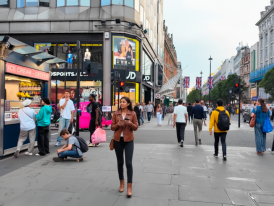
People shopping on Oxford Street
Oxford Street
Oxford Street is shopping, crowds, and not much else. The department stores (Selfridges, John Lewis) are fine if you need them, but the street itself is joyless. Regent Street, running parallel, has better architecture and slightly fewer people, but I'd still send you elsewhere.
Instead: Head to the independent shops around Marylebone, the vintage stores in Hackney, or the boutiques in Notting Hill if you want to shop without the crush.
For more hidden gems in London that skip the tourist traps entirely, follow the food and the locals.
Leicester Square
Leicester Square is where tourists queue for theatre tickets and overpriced chain restaurants. There's no neighborhood here, no life beyond the commercial transaction. Walk through if you must, but don't stop.
Instead: Soho is five minutes north and infinitely better. Or head to the National Gallery at Trafalgar Square if you want culture without the crowds.
Tip: What If You Could See London Through Local Eyes?
Go beyond guidebooks with someone who actually lives here.What to Eat in London: Where Does the Real Food Live?
London is one of the world's great food cities, but you have to know where to look. The best meals aren't in Central London.
They're in Wembley's Indian restaurants, Haringey's Turkish grills, Hackney's Caribbean kitchens, and the Vietnamese spots scattered across East London. If you're serious about what to eat in London, follow the communities who cook for each other, not for Instagram.
Where I Actually Eat by Area
Wembley – Better Indian food than anywhere in Central London. Skip Dishoom, come here instead.
Haringey / Green Lanes – Turkish grills, pide, meze, late-night tea in tulip glasses. Go hungry.
Hackney and Brixton – Caribbean plates with proper heft. Jerk chicken, rice and peas, plantain. Leave happy.
Shoreditch / Spitalfields – Hit-or-miss, but keep going and you'll find Colombian bakeries, Vietnamese banh mi, and the fabric shop survivors.
Borough Market – Street food, cheese, baked goods. Touristy but still good. Go early.
South Kensington / Chelsea – Michelin-starred restaurants, French bistros, upscale Italian. Polished, pricey, rarely disappointing.

Gökyüzü Green Lanes grilled kebabs to share
My Personal Restaurant Picks
Restaurant Ours (South Kensington) – Modern European, greenhouse vibes, a bit sceney but the food and cocktails hold up.
The Surprise (Chelsea) – Cozy pub dining near the Physic Garden. Book the fireplace table.
28 Church Row (Hampstead) – Spanish-leaning small plates; pork belly and croquetas are the move.
The Mayfair Chippy (Mayfair) – Yes, fish and chips in Mayfair. It's good, and sometimes you just want the classic.
GAIL's (Multiple locations) – Reliable bakery chain. Coffee, pastries, no fuss.
Something Different on a Budget
Wetherspoons – I know, I know.
But it's cheap, the pints are drinkable, and sometimes you just need a plate without ceremony. Fine for what it is. Can be rowdy late.
Things to Do at Night in London: Where Are the Real Bars?
London's nightlife spreads wide, from cocktail bars in Soho to dive bars in Peckham, late-night Turkish tea on Green Lanes to wine bars in Hackney.
For more things to do at night in London, focus on neighborhood bars where locals actually drink, not the places designed for bachelor parties and tourists.
Here's where I actually go when I'm not just being polite:
Coupette (Bethnal Green/Soho) – Calvados-focused cocktails, serious but not stuffy. Small space, arrive early. Cocktails £12-£16.
Lucy Wong (Fitzrovia) – Basement cocktail bar, 1950s Hong Kong styling, moody lighting, proper drinks. Cocktails £14-£18.

Interior of Tonight Josephine in Waterloo
Sager & Wilde (Hackney / Shoreditch) – Natural wine, small plates, the kind of place where you stay longer than planned. Glasses from £8.
Leyton Calling (Leyton) – Dive bar energy, tropical-leaning list under the arches, warm light. Far east but worth it if you're already out that way.
Tonight Josephine (Shoreditch/Waterloo) – Camp, theatrical, loud, pink, ridiculous in the best way. Not for everyone, perfect for some people.
These are neighborhood bars, not destination spots. The vibe is casual, the crowds are local, and you won't feel like you're performing for tourists.
Ever Wonder What London Feels Like Beyond the Basic Sights?
Discover neighborhoods, flavors, and everyday life with a local.
Practical London Tips: Transport, Timing, and Rhythm
Getting around, timing your visit, and understanding London's seasonal rhythms makes the difference between a frustrating trip and one that flows.
Getting Around: Bus Routes Beat the Tube
The Tube is fast, but the bus shows you London. Ride the top deck, watch the city change as you move through zones, and you'll understand the geography better than any map.
Routes like the 38 (Victoria to Hackney), the 24 (Pimlico to Hampstead), and the 15 (Blackwall to Charing Cross) trace long arcs through the city.
Get an Oyster card or use contactless payment. Daily caps mean you won't overspend, and buses are cheaper than the Underground.
Seasonality and Green Spaces
Summer is when London opens up. The parks fill with picnics, the pub gardens get crowded, and every neighborhood with a patch of grass becomes a gathering spot.
Hyde Park, Regent's Park, Greenwich Park, Hampstead Heath. These are where Londoners escape the busy city without leaving it.
Winter is darker and damper, but the museums and galleries stay warm, the pubs feel cozier, and the Christmas markets (especially Southbank and Winter Wonderland in Hyde Park) give the city a festive rhythm. Dress for rain always, regardless of season.

Greenwich Park in the summer
Day Trips from London: When You Need a Break
If London feels too much, you're close to easy day trips from London that give you breathing room without the logistics headache:
Brighton (1 hour by train) – Beach town, pier, independent shops, LGBTQ+ friendly energy.
Oxford or Cambridge (1 hour) – University towns, old libraries, punting, beautiful Georgian architecture.
Windsor (40 minutes) – Royal castle, Thames-side walks, quieter than Central London.
Greenwich (30 minutes by DLR or river bus) – Maritime history, Royal Naval College (a UNESCO World Heritage Site), Greenwich Park, the Meridian Line. Old Royal Naval College is one of the most stunning examples of British baroque architecture. Walk through Greenwich Market for small museums, vintage finds, and street food.
All have regular trains and clear transport links. Go early, come back late, and you'll still make dinner in the city.

View of Russell Square and Goodge Street
Personal Recommendations (No-Nonsense, Lived-In)
These are the shortcuts I give friends when they visit: the neighborhoods I actually frequent, the routes I walk for pleasure, and the spots I return to without anyone asking me to write about them.
Where I Actually Eat by Area
Haringey Green Lanes – Turkish food done right: grills, pide, late-night tea.
Hackney and Brixton – Caribbean plates with proper heft; go hungry, leave happy.
Wembley vs Brick Lane – Wembley still wins for Indian food. Better than Dishoom.
Quick Character Notes I Tell Friends
Chelsea – Rich hipsters, Notting Hill energy with more shops.
South Kensington – Ultrarich, museums and mews.
Spitalfields – Touristy but walk two streets out and you get your London back.
Pimlico and Belgravia – Embassy hush; curious to see who does what. Keep voices low near embassy buildings.
Russell Square and Goodge Street – Great architecture and bubble tea from Asian student life.
Barbican – Brutalist beauty, short on coffee stops. Treat it like a gallery day.
Hampstead – Money meets old-school artists; the Heath levels everyone.
Bus tip – Ride to the parks and watch London change as you go.
Soft-Spot Micro-Routes
Dulwich – Coffee and a loaf on the high street, follow the white fingerpost signs, loop the park and pond, then the Picture Gallery.
Hampstead – Lanes up to the Heath, a quiet pint at The Holly Bush, peek at Fenton House gardens.
Kensington – Duck off Kensington Church Street into mews, flowered pubs, candy-stripe facades.
South Kensington – Museums when it rains, then mews and small restaurants fanning out from the station.
Chelsea – Bywater pastels, Godfrey rainbow, King's Road, river embankment, Chelsea Physic Garden.
Highgate – Cemetery calm, Waterlow Park views, cheerful shopfronts, Holly Village.
Mayfair – Mount Street and Brown Hart Gardens for a raised pocket of quiet.
Recommended Picks
Restaurant Ours (South Ken) – Modern European, greenhouse vibe, cocktails hold up. Mains £22-£35.
The Surprise (Chelsea) – Cozy pub dining near the Physic Garden. Book the fireplace table.
28 Church Row (Hampstead) – Spanish-leaning small plates; pork belly and croquettes are the move. Plates £8-£16.
The Mayfair Chippy (Mayfair/City) – Fish and chips done properly. Around £12-£18.
GAIL's (Dulwich Village) – Loaves and coffee; expect queues on weekend mornings.
Budget Curveball
Wetherspoons – Basic but cheap. Fine for a pint and plate without fuss. Pints are ~£3-£6+ depending on borough and deals. Can be rowdy late.
Bars I Actually Revisit
Coupette (Bethnal Green/Soho) – Calvados-friendly cocktails, minimalist and precise. Cocktails £12-£16.
Lucy Wong (Fitzrovia) – 1950s Hong Kong styling, late-night, moody. Cocktails £14-£18.
Sager & Wilde (Hackney Road) – Great wines by the glass, grilled cheese if peckish. Glasses from £8.
Leyton Calling (Leyton) – Tropical-leaning list under the arches, warm light.
Tonight Josephine (Shoreditch/Waterloo) – Loud, pink, themed fun with friends.
Wish You Could Just Ask a Local?
Book a quick video call and get insider answers to your trip questions.
Frequently Asked Questions
1) What is the best neighborhood in London for first-time visitors?
If it's your first time and you want easy access to everything, stay somewhere between King's Cross and South Kensington. You'll be close to museums, parks, Central London attractions, and transport links that radiate outward. But don't spend all your time there. The best of London lives in the neighborhoods beyond Zone 1.
2) Which London neighborhood has the best food?
Wembley for Indian food. Green Lanes for Turkish. Brixton and Hackney for Caribbean. Shoreditch and Bethnal Green for Vietnamese and creative fusion. Borough Market for variety. The best food in London lives outside Central London, where communities cook for each other, not for tourists.
3) Is East London safe for tourists?
Yes. Like any major city, use common sense: watch your belongings, avoid empty streets late at night, and trust your instincts. Hackney, Shoreditch, and Bethnal Green are busy, well-traveled, and full of locals going about their lives. The creative scene and street life here are part of what makes East London worth visiting.
4) What neighborhoods in London have the most green spaces?
Hampstead (for the Heath), Kensington (for Hyde Park and Kensington Gardens), Greenwich (for Greenwich Park), and Dulwich (for Dulwich Park and the village quiet). North London generally offers more green space than Central or East London, where parks are smaller and more competed for.
5) Where should I stay in London to avoid tourist crowds?
Stay north (Hampstead, Highgate), east (Hackney, Leyton), or south (Brixton, Peckham, Dulwich). These neighborhoods feel residential, offer better value, and connect to Central London via Tube or bus within 20-40 minutes. You'll eat better, pay less, and see how Londoners actually live.
6) How do I experience London like a local?
Ride the bus. Eat outside Central London. Visit markets on weekends (Broadway Market, Brixton, Portobello). Walk along the River Thames beyond the tourist stretch. Follow the Regent's Canal through North London. Go to a pub on a Tuesday night. Don't just photograph the city. Sit in it, eat in it, and let it unfold slowly.

Walking through quiet and pretty street
Final Thoughts: London Neighborhoods Reveal Themselves Slowly
The best neighborhoods in London don't perform for you. They show themselves in layers: the market that only happens on Saturdays, the Turkish bakery that opens at dawn, the mews lane you find by accident, the park bench where locals sit and watch the city move.
London is enormous, layered, and impossible to finish. You can live here for years and still find streets you've never walked, food you've never tasted, neighborhoods you've somehow missed. That's the gift of it. The city keeps unfolding.
If you want UK experiences beyond the postcards, get out of Central London.
Walk Hampstead Heath. Eat on Green Lanes. Follow the Regent's Canal from Camden to Hackney. Let the city surprise you with its diversity, its immigrant history, its working neighborhoods, its parks, and its people.
Come hungry, come curious, and give London time to show you what it is.
More London For You
Ready to Plan Your Perfect Day in London?
Start your experienceTravel Guides Can Only Take You So Far
City Unscripted connects travelers with locals who shape days that actually fit your interests, not someone else’s checklist.
See how it worksWish You Had a Local Friend in London?
One who knows the city inside out and could plan a private day just for you? Our local hosts do exactly that: no scripts, no tourist traps, just the side of the city most people miss.










